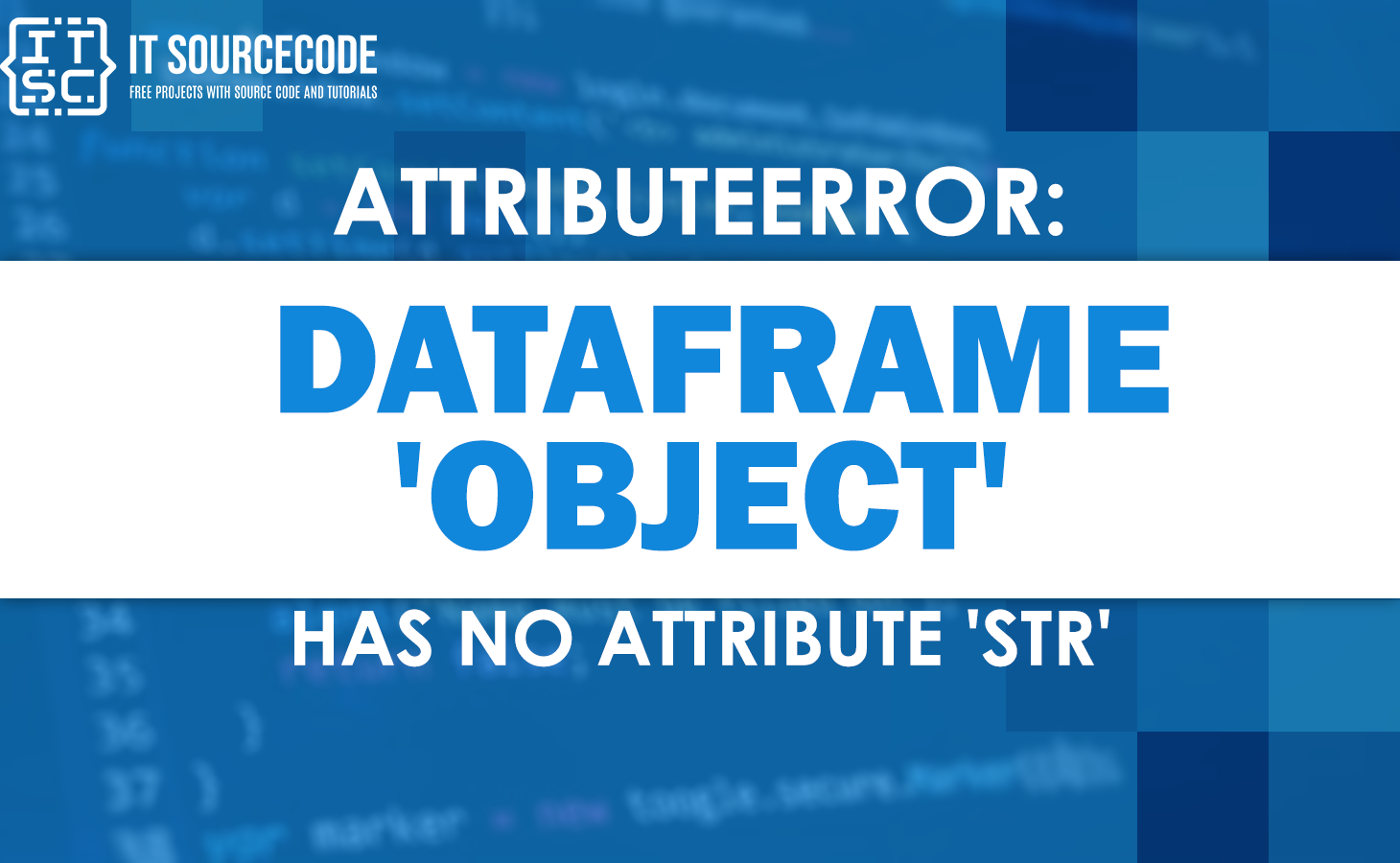Are you encountering attributeerror: ‘dataframe’ object has no attribute ‘str’?
This error could be quite frustrating to resolve.
Hence, in this article we will explore the causes of this error and provide solutions to fix it.
But before that here is a quick overview of Panda DataFrame…
A Pandas DataFrame is a two-dimensional table-like data structure with labeled axes (rows and columns).
Additionally, it is similar to a spreadsheet or a SQL table, but with much more functionality.
Thus, DataFrames can be created from various data sources, including CSV files, SQL databases, and Python dictionaries.
Attributeerror: ‘dataframe’ object has no attribute ‘str’
The AttributeError: ‘DataFrame’ object has no attribute ‘str’ error occurs when trying to perform a string operation on a DataFrame column that does not contain string values.
For example, if we have a DataFrame with columns ‘Name’, ‘Age’, and ‘Salary’, and we try to apply the str.upper() method to the ‘Age’ column.
Then we will get the “AttributeError: ‘DataFrame’ object has no attribute ‘str‘” error because the ‘Age’ column does not contain string values.
How to fix attributeerror: ‘dataframe’ object has no attribute ‘str’
There are several ways to fix the “AttributeError: ‘DataFrame’ object has no attribute ‘str’” error, depending on the specific scenario.
Here are some possible solutions:
- Check the Data Types of the DataFrame Columns
The first step in fixing the AttributeError: ‘DataFrame’ object has no attribute ‘str’ error is to check the data types of the DataFrame columns.
If a column does not contain string values, it cannot be manipulated with string methods.
To check the data types of the DataFrame columns, we can use the info() method.
For example:
import pandas as pd
df = pd.read_csv(‘data.csv’)
print(df.info())
This will print out information about the DataFrame, including the data types of each column.
If a column does not contain string values, it will have a data type of int, float, or another non-string type. - Convert the DataFrame Column to a String
If a column does not contain string values but we still need to apply a string method to it, we can convert the column to a string using the astype() method.
For example, to convert the ‘Age’ column to a string, we can do the following:
df[‘Age’] = df[‘Age’].astype(str)
This will convert the ‘Age’ column to a string, allowing us to apply string methods to it without getting the AttributeError: ‘DataFrame’ object has no attribute ‘str’ error. - Use a Conditional Statement
If we want to apply a string method to only certain columns of the DataFrame that contain string values…
We can use a conditional statement to check the data type of each column before applying the method.
For example, to apply the str.upper() method only to columns with string data types, we can do the following:
for col in df.columns:
if df[col].dtype == ‘object’:
df[col] = df[col].str.upper()
This will loop through each column of the DataFrame and check if its data type is ‘object’, which is the data type for string columns in Pandas.
If the data type is ‘object’, the str.upper() method will be applied to the column.
Conclusion
The “AttributeError: ‘DataFrame’ object has no attribute ‘str'” error can be a common issue when working with data in Python.
It occurs when trying to manipulate a DataFrame column with a string method, but the column does not contain string values.
To fix this error, we can check the data types of the DataFrame columns, convert non-string columns to strings, or use conditional statements to apply string methods only to string columns.
We hope that this article has provided you with the information you need to fix this error and continue working with Python.
If you are finding solutions to some errors you’re encountering we also have attributeerror module typing has no attribute _specialform.

